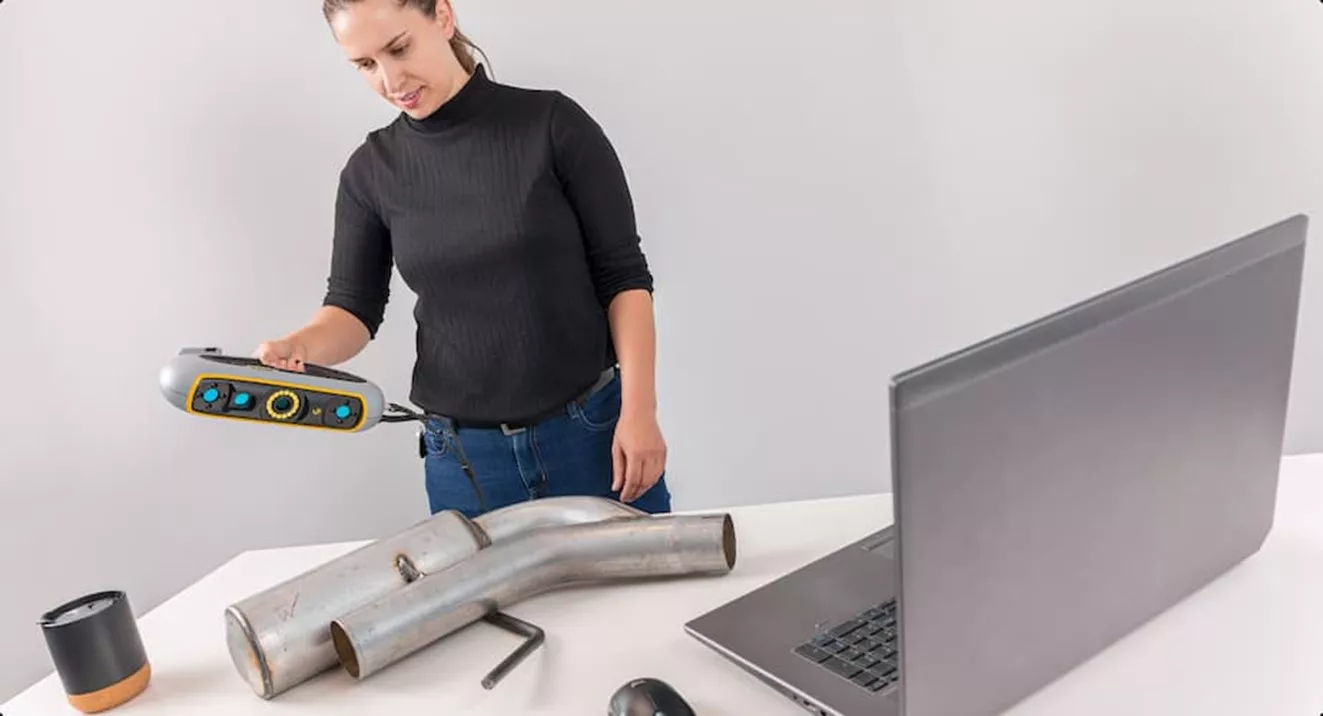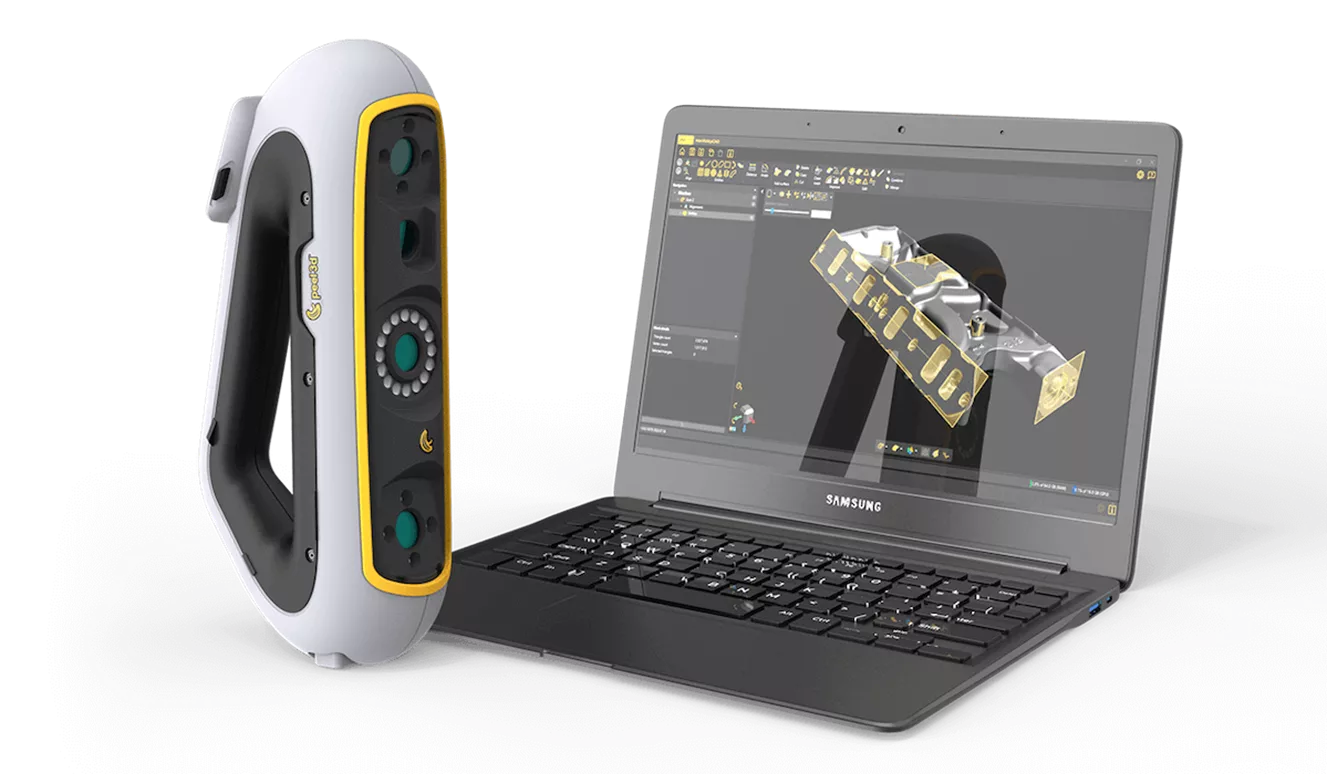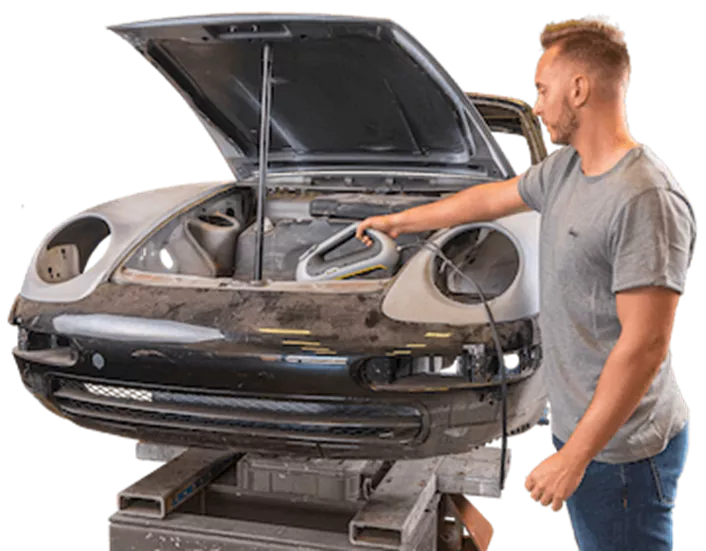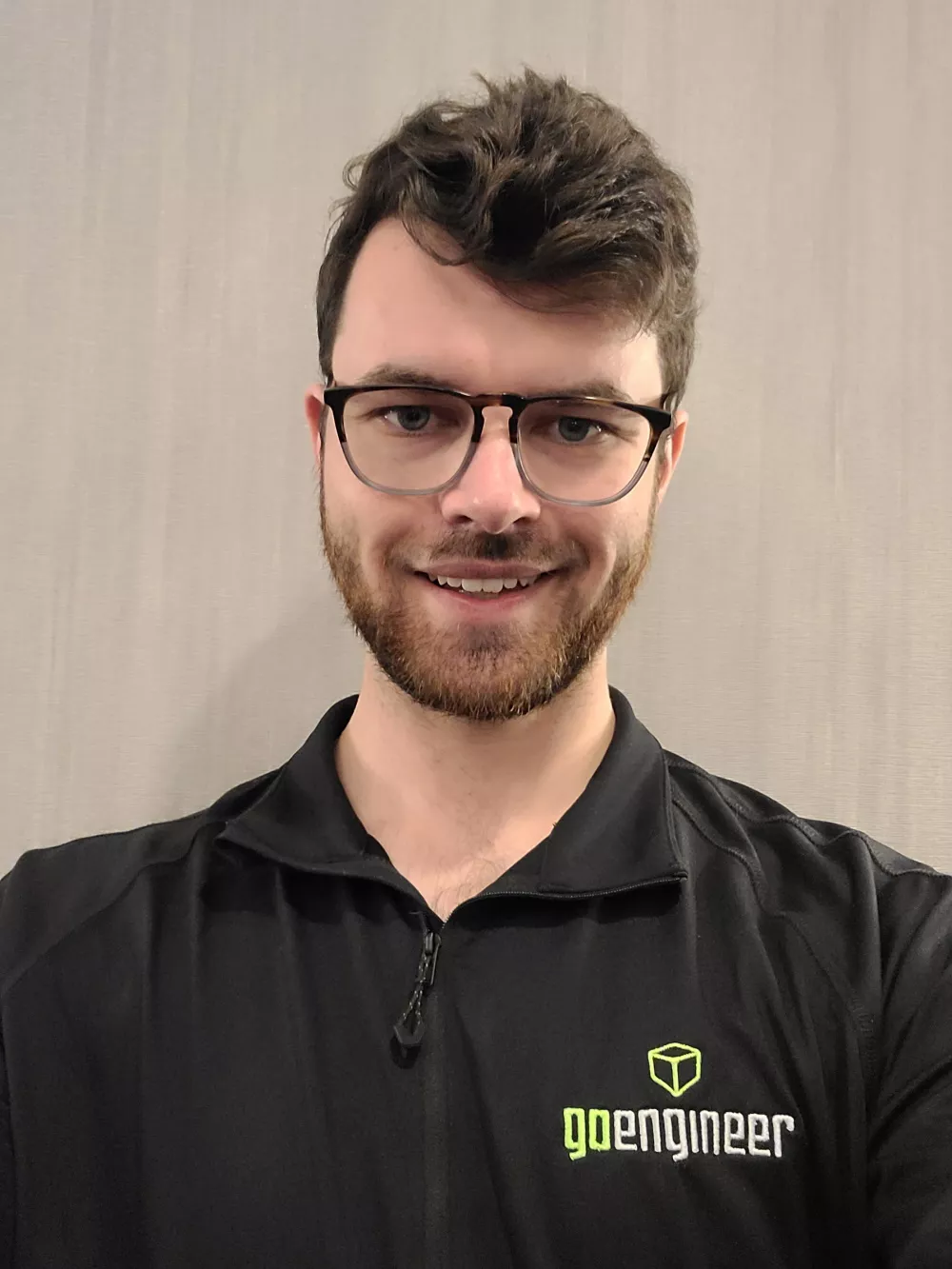Peel 3 3D Scanner: Features & Applications
The peel 3 is a structured light handheld 3D scanner developed by Peel 3D that offers an affordable and efficient way to digitize physical objects. This article provides an overview of its capabilities, features, and potential applications.

Key Features
The peel 3 3D scanner has gained widespread recognition for its user-friendliness and high-quality scans. Some of its key features include:
Portability
One of the standout features of the peel 3 scanner is its portability. It's lightweight and easy to carry around, making it a versatile tool for professionals who need to scan objects, wherever they may be. It does require a tethered connection to a laptop, but with the addition of a power bank to keep things charged, you could scan anywhere.
Very User-friendly
The peel 3 scanner and peel. CAD software is easy to learn, making it accessible to both beginners and experienced users. With its simple setup and intuitive software, you can start scanning right away, and easily operate the advanced tools to modify the mesh or extract entities for reverse engineering. If it is your first time using a 3D scanner, expect a day of getting up to speed , but with the guided videos for setup, software training, and troubleshooting, you will easily start producing quality scans in a matter of hours.

Accuracy
The peel 3 scanner offers impressive scanning accuracy up to 0.004”, capturing even the finest details of an object with precision. It boasts high resolutions up to 0.01”, ensuring that your 3D models capture all the tiny details of the physical part. With the structured light source used to capture the surface, you can also acquire the color information of the object – making it perfect for artists and those utilizing PolyJet 3D printing technology.
Speed
Positioning targets (which are optional) can help track objects, so you can get the data you need quickly. Even without targets, the scanner uses the unique geometry of your part to maintain its position while scanning.
Versatility
The peel 3D scanner is capable of scanning a wide range of objects, from small components to large machinery. The recommended part size is 3 inches to 10 feet, making it suitable for most industry applications.

Applications
3D scanning is used for many applications in a variety of industries. Here are some of the most popular applications the peel 3 is most often used for:
Engineering and Manufacturing
Engineers and manufacturers use the peel 3D scanner for reverse engineering, quality control, and product design. It aids in creating accurate 3D models of physical components for further analysis and design development.
Art and Design
Artists and designers utilize this scanner to digitize sculptures, artwork, and prototypes. This enables them to create digital versions for 3D printing, modification, or replication. An up-and-coming application is VR & AR projects, where real-world object color and texture are important. The peel 3 saves time sculpting and rendering by taking this information directly from the physical source.
Healthcare
In the medical field, the peel 3 has been used to create custom prosthetics and orthotics. Taking measurements directly from a patient ensures an accurate fit and increases comfort, improving the quality of life for the patient.
Archaeology and Museums
Archaeologists and museum curators employ peel 3D scanners to create digital replicas of historical artifacts, preserving them for future generations and enabling in-depth research.
Education
3D scanning is valuable for use in schools and colleges because it allows students to learn about the technology and its practical applications in industry.

Conclusion
Whether you're an engineer seeking to improve product design, an artist aiming to digitize your creations, or a student just now exploring this technology, the peel 3 offers a solution that's both accessible and effective. For any questions, or to schedule a demo of the peel 3D scanner, contact us to learn more.
More 3D Scanning News
Scan-to-Print Workflow: Tips to Optimize 3D Printed Food Models
Choosing Reverse Engineering Software: Creaform & Geomagic Considerations
Choosing a 3D Scanner: Light vs Lasers, Applications, & Considerations
3D Scanning for Automotive: Applications, Hardware, & Software
3D Technology and Archaeology: Enabling Artifacts to Virtually & Literally Travel the World

About Sam Cheney
Sam Cheney is an Application Engineer specializing in 3D Scanning and Additive Manufacturing based out of Dallas, TX. He is a Certified Stratasys Applications Engineer and co-leads the 3D Scanning Services team. Originally from the UK, Sam holds a Master's Degree in Mechanical Engineering with a specialization in 3D Printing from The University of Sheffield. Alongside working with commercial 3D printers & scanners, Sam trains others and teaches courses for Geomagic products & VXelements software. He is also an avid consumer 3D printer user and uses his Creality Ender3 to create art and functional parts for projects in his everyday life.
Get our wide array of technical resources delivered right to your inbox.
Unsubscribe at any time.
